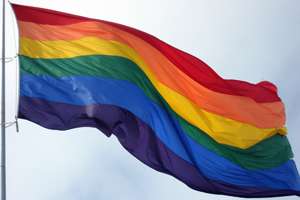Health inequalities seen in gays and lesbians

Gay, lesbian and bisexual people face several health disparities relative to their heterosexual peers, finds a new study in the American Journal of Preventive Medicine.
The reasons for the differences seen between gays, lesbians, bisexuals, and heterosexuals seen in this data are not clear and probably very complex, said lead author John Blosnich, Ph.D., M.P.H., post-doctoral fellow at the Center for Health Equity Research and Promotion at the Veterans Affairs Pittsburgh Healthcare System. The data show an association, not a cause and effect, he noted.
For instance, homosexual people are more likely to smoke than are those who identify as heterosexual. Gay men are less likely to be overweight or obese than heterosexual men. Lesbians are 30 percent less likely to have an annual physical examination than heterosexual women. Bisexual men are twice as likely to say that they have ever had asthma as heterosexual men.
The findings are from an analysis of Behavioral Risk Factor Surveillance System (BRFSS) surveys of more than 93,000 adults done in 2010 in Alaska, Arizona, California, Maine, Massachusetts, Montana, New Mexico, North Dakota, Washington, and Wisconsin. 2.4 percent of the people surveyed in those 10 states identified themselves as lesbian, gay, or bisexual.
BRFSS surveys are conducted regularly by health departments in every U.S. state and territory and gather health and lifestyle information from hundreds of thousands of people, explained Blosnich. The confidential, anonymous information is used to monitor health problems, health behaviors and risk behaviors.
"Unfortunately, sexual orientation is not included on the majority of federally-funded health surveillance – including the national BRFSS," Blosnich said. "There is a clear need for inclusion of both sexual orientation and gender identity as standard demographic questions on all federally funded health surveillance." Since 2010, more states have added questions about sexual orientation, he added.
"We won't be able to fully understand the health of LBGT [lesbian, bisexual, gay, and transgender people] until they are able to identify themselves," Blosnich noted. However, data from BRFSS surveys can be extrapolated to larger populations, especially as more states ask questions about sexuality on their surveys, he said.
"For me this is a study that tells us we still need to do more research," said Henry Ng, M.D., a physician in Cleveland, OH, and president of GLMA: Health Professionals Advancing LGBT Equality, formerly known as the Gay and Lesbian Medical Association.
Although the purpose of the study was not to determine what percentage of American adults self-identify as gay, lesbian, or bisexual, the 2.4 percent of people who did so in this survey "is close to ballpark of what we have seen with other studies," Ng said. However, it is known that people in sexual minorities tend to under-report their sexual orientation or gender status, he added.
More information: Blosnich JR, Farmer GW, Lee JGL, et al. (2014). Health inequalities among sexual minority adults: Evidence from ten U.S. States, 2010. American Journal of Preventive Medicine.














